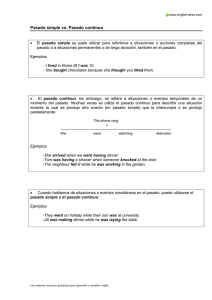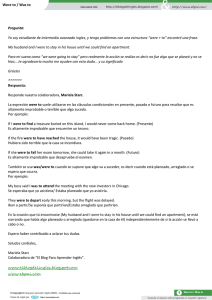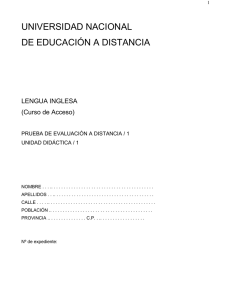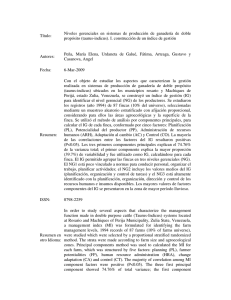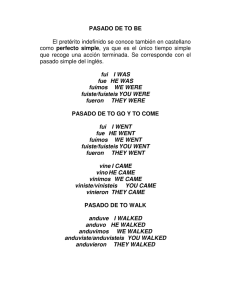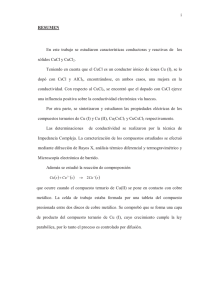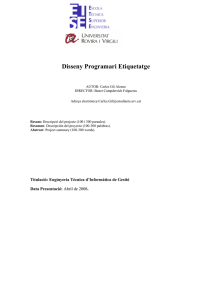That new unit appeared in the organization chart of the Navy. A
Anuncio
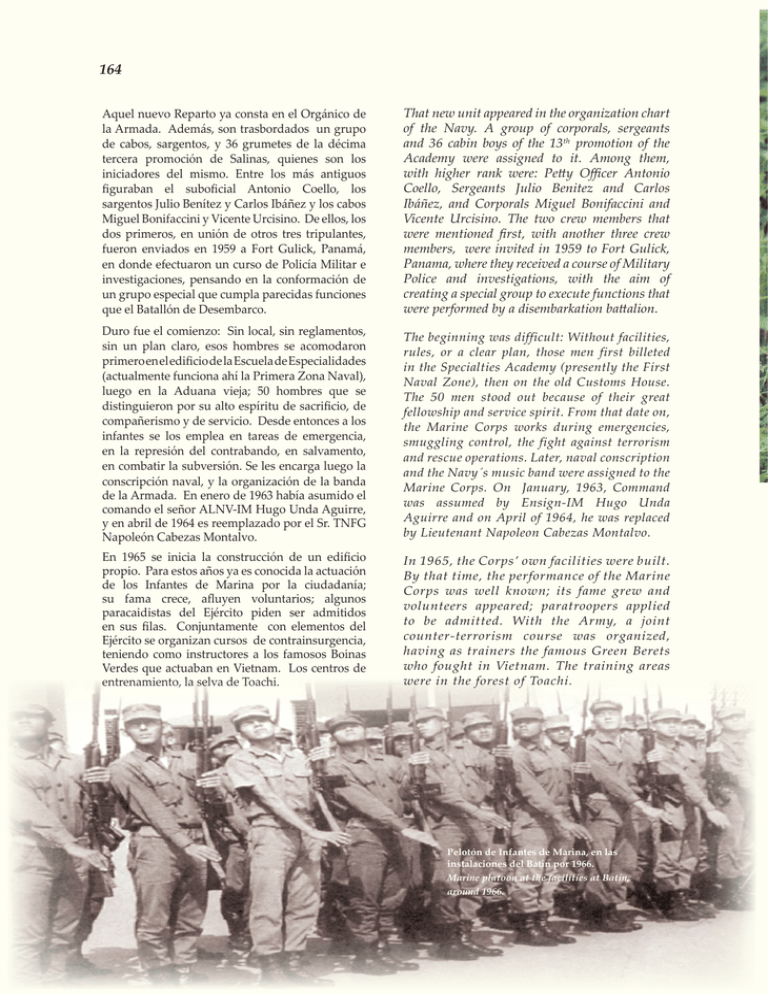
164 Aquel nuevo Reparto ya consta en el Orgánico de la Armada. Además, son trasbordados un grupo de cabos, sargentos, y 36 grumetes de la décima tercera promoción de Salinas, quienes son los iniciadores del mismo. Entre los más antiguos figuraban el suboficial Antonio Coello, los sargentos Julio Benítez y Carlos Ibáñez y los cabos Miguel Bonifaccini y Vicente Urcisino. De ellos, los dos primeros, en unión de otros tres tripulantes, fueron enviados en 1959 a Fort Gulick, Panamá, en donde efectuaron un curso de Policía Militar e investigaciones, pensando en la conformación de un grupo especial que cumpla parecidas funciones que el Batallón de Desembarco. That new unit appeared in the organization chart of the Navy. A group of corporals, sergeants and 36 cabin boys of the 13th promotion of the Academy were assigned to it. Among them, with higher rank were: Petty Officer Antonio Coello, Sergeants Julio Benitez and Carlos Ibáñez, and Corporals Miguel Bonifaccini and Vicente Urcisino. The two crew members that were mentioned first, with another three crew members, were invited in 1959 to Fort Gulick, Panama, where they received a course of Military Police and investigations, with the aim of creating a special group to execute functions that were performed by a disembarkation battalion. Duro fue el comienzo: Sin local, sin reglamentos, sin un plan claro, esos hombres se acomodaron primero en el edificio de la Escuela de Especialidades (actualmente funciona ahí la Primera Zona Naval), luego en la Aduana vieja; 50 hombres que se distinguieron por su alto espíritu de sacrificio, de compañerismo y de servicio. Desde entonces a los infantes se los emplea en tareas de emergencia, en la represión del contrabando, en salvamento, en combatir la subversión. Se les encarga luego la conscripción naval, y la organización de la banda de la Armada. En enero de 1963 había asumido el comando el señor ALNV-IM Hugo Unda Aguirre, y en abril de 1964 es reemplazado por el Sr. TNFG Napoleón Cabezas Montalvo. The beginning was difficult: Without facilities, rules, or a clear plan, those men first billeted in the Specialties Academy (presently the First Naval Zone), then on the old Customs House. The 50 men stood out because of their great fellowship and service spirit. From that date on, the Marine Corps works during emergencies, smuggling control, the fight against terrorism and rescue operations. Later, naval conscription and the Navy´s music band were assigned to the Marine Corps. On January, 1963, Command was assumed by Ensign-IM Hugo Unda Aguirre and on April of 1964, he was replaced by Lieutenant Napoleon Cabezas Montalvo. En 1965 se inicia la construcción de un edificio propio. Para estos años ya es conocida la actuación de los Infantes de Marina por la ciudadanía; su fama crece, afluyen voluntarios; algunos paracaidistas del Ejército piden ser admitidos en sus filas. Conjuntamente con elementos del Ejército se organizan cursos de contrainsurgencia, teniendo como instructores a los famosos Boinas Verdes que actuaban en Vietnam. Los centros de entrenamiento, la selva de Toachi. In 1965, the Corps’ own facilities were built. By that time, the performance of the Marine Corps was well known; its fame grew and volunteers appeared; paratroopers applied to be admitted. With the Army, a joint counter-terrorism course was organized, having as trainers the famous Green Berets who fought in Vietnam. The training areas were in the forest of Toachi. Pelotón de Infantes de Marina, en las instalaciones del Batín por 1966. Marine platoon at the facilities at Batín, around 1966.
